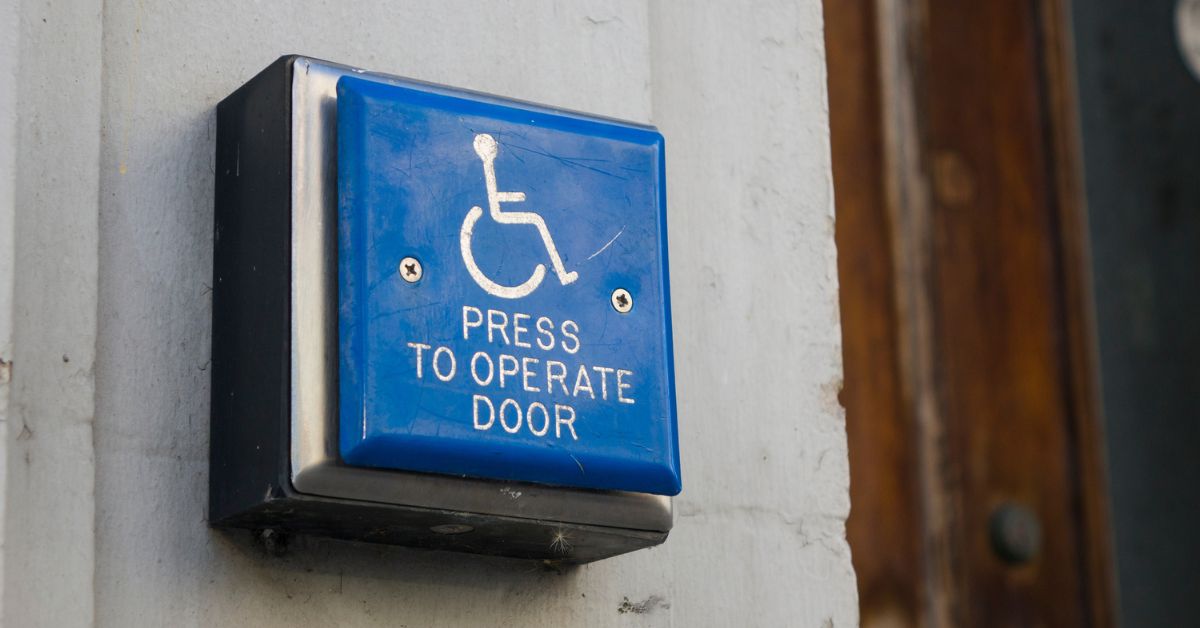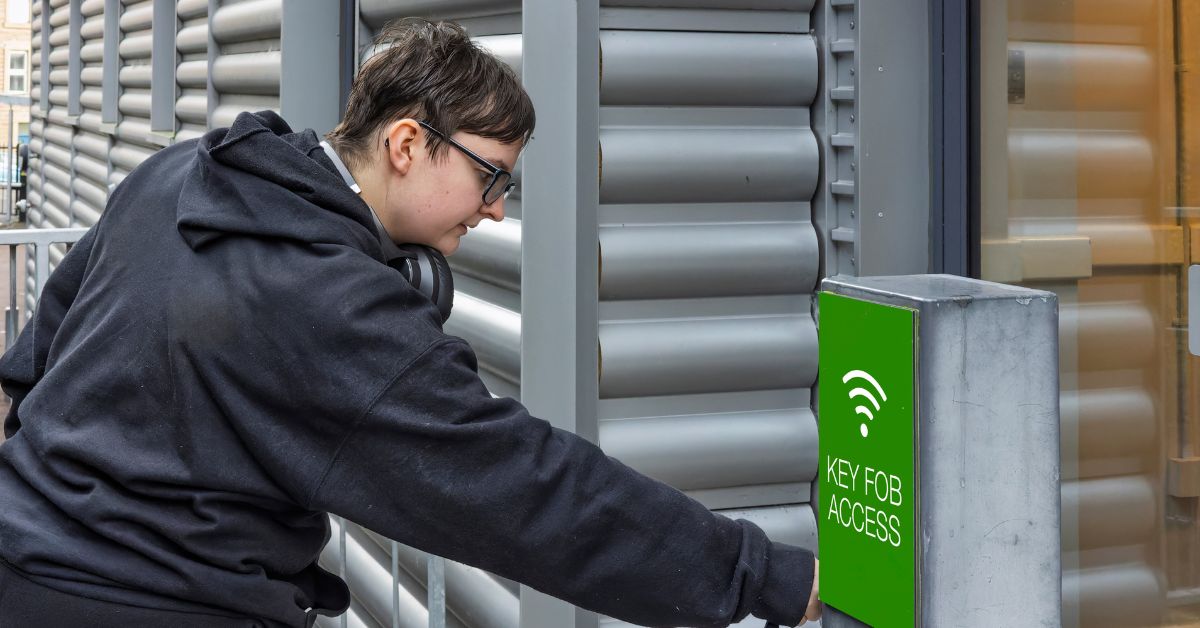7 Trends To Watch For in Commercial Door Hardware

If you’re responsible for a facility, you can’t afford to ignore the latest innovations in the commercial door hardware industry. These days, door hardware goes far beyond bolts and hinges; it meets modern expectations for convenience, connectivity, and compliance. Whether you manage an office building, a healthcare facility, a school, or a retail space, understanding current trends can help you make decisions that protect people, property, and investments.
Are you curious about the advancements shaping the industry? Explore seven trends to watch for in commercial door hardware so you know what to consider when it’s time for your next upgrade.
Smart Is Standard
You can’t talk about commercial door hardware trends without mentioning how smart technology has become the new standard. Smart locks, automated door closers, and access control systems are no longer luxury items—they’re common features in many commercial buildings.
Why Prioritize Smart Hardware?
Smart door hardware seamlessly integrates with your security and building management systems, often with the help of apps and cloud platforms. Even when you’re not on-site, this means you get real-time control and insight into who enters and exits your facility. Additionally, cloud-based software makes it easy to update permissions or lock down your building remotely during an emergency.
Imagine being able to grant temporary access to a contractor on your phone or automatically locking every external door at closing time with a single command. By using smart technology, you can enjoy this extra layer of convenience while keeping your facility secure.
Touchless Technology
Since the COVID-19 pandemic, people think about hygiene and safety in public spaces much differently. In response to this change, door hardware manufacturers have begun increasing their focus on touchless solutions. Motion-activated door openers, wave-to-unlock sensors, and foot-operated door pulls are now becoming increasingly popular.
The Business Benefits of Going Touchless
By reducing the spread of germs, touchless entry systems will keep your facility’s occupants healthier. Plus, they create a more accessible and user-friendly environment for everyone, including individuals with disabilities. When commercial spaces prioritize a touch-free experience, they signal to tenants and visitors that their safety and inclusivity matters.
According to a 2020 survey by Cleaning & Maintenance Management, over 75 percent of building managers who participated indicated that health and safety is a top concern. To address this, many managers are looking for touchless technology solutions.

Electronic Locks
Arguably, electronic locks are the single biggest disruptor in commercial door hardware right now. If you’re still relying solely on traditional mechanical locks, you may be leaving your facility vulnerable and making day-to-day operations more difficult than they need to be.
What Makes Electronic Locks a Game Changer
Electronic locks for doors allow you to move beyond old-fashioned metal keys. You can assign secure access through cards, fobs, PINs, smartphones, or biometrics. Some models even allow you to audit who accessed a space and when, which is invaluable for investigation or compliance needs. Not to mention, you’ll finally be able to avoid those expensive locksmith visits to rekey your doors after staff changes. Instead, you just need to update the credential online.
Schools and offices often use electronic locks to grant teachers or employees access outside of regular hours while keeping track of every entry and exit. Hospitals rely on electronic locks for sensitive areas like medication storage rooms to meet strict regulatory requirements.
Electronic Lock Trends
- Mobile-first access: Thanks to NFC (near-field communication) and Bluetooth technology, using phones as access credentials has been growing in popularity.
- Cloud-based management: Manage multiple sites and user permissions from a single dashboard—a great option for organizations with several locations.
- Hybrid locks: Some products now combine mechanical, electronic, and even biometric security features for layered protection.
- Integration: Modern electronic locks connect with alarm systems, CCTV, and climate controls, creating a unified smart building.
Sustainable Solutions
Many businesses have begun focusing on implementing sustainable solutions. Surprisingly, door hardware can play an important role in sustainability.
- Recyclable materials: Manufacturers are shifting to responsibly sourced metals and eco-friendly coatings.
- Energy saving: Automated door closers help maintain heating and cooling efficiency by minimizing drafts and keeping doors shut when required.
- Certifications: Look for LEED credits and products with Environmental Product Declarations.
By choosing sustainable hardware, you contribute to a cleaner environment and might even benefit from lower energy costs and a positive brand perception.
Aesthetics Matter
Functionality used to overshadow design in commercial door hardware, but that’s changing. Tenants and building owners now expect attractive, coordinated fixtures to match their branding and interior aesthetics.
Marrying Form and Function
Manufacturers are expanding their palette with finishes such as matte black, satin nickel, and bronze. Custom lever shapes, minimalistic designs, and branded elements are increasingly common. Some companies now offer modular systems that allow you to swap out handles and covers to update the look while keeping the core mechanism intact.
When upgrading, consider hardware that complements both your interior design and your facility’s security needs.
Accessibility and Inclusive Design
Laws like the Americans with Disabilities Act (ADA) and similar global standards require that commercial spaces are accessible to all users. However, accessibility isn’t just about compliance; it’s also about thoughtful design that welcomes people of all abilities.
Key Considerations
- Lever handles over knobs: Particularly for people with limited grip strength, levers are much easier to operate.
- Low-force openers: Door closers that require minimal effort are a must.
- Clear signage and visual indicators: Consider adding braille or tactile markers to enhance visibility.
When you go beyond mere compliance, you can establish your facility as a safe, welcoming place. Even better, your efforts may help to broaden your potential user base.

Integrated Security Systems
In this modern age, door hardware boasts a sophisticated system. Increasingly, these fixtures are part of a multilayered security system that includes cameras, alarms, and building management systems. Seamless integration is the new standard.
What You Gain From Integration
When your doors, cameras, and alarms communicate with one another, you receive smarter, faster responses to incidents. For example, if an unauthorized door is forced open, an integrated system will lock down affected zones while alerting security personnel and triggering surveillance recording.
Integration makes managing your security simpler and more proactive, providing insight into potential vulnerabilities before they become problems.
Taking the Next Steps
Navigating trends in commercial door hardware may seem overwhelming, but staying current gives you a major edge. Now that you’re aware of these seven trends to watch for in commercial door hardware, it’s time to assess your facility’s needs and prioritize areas where upgrades will have the greatest impact.
After identifying your needs, head over to Door Hub to find the perfect solutions to help support your facility. With a few thoughtful investments, you’ll create a safer, more efficient, and more impressive environment for years to come.

Author
Greg Richard
Chief Technical Officer and Founding Member of DoorHub.com